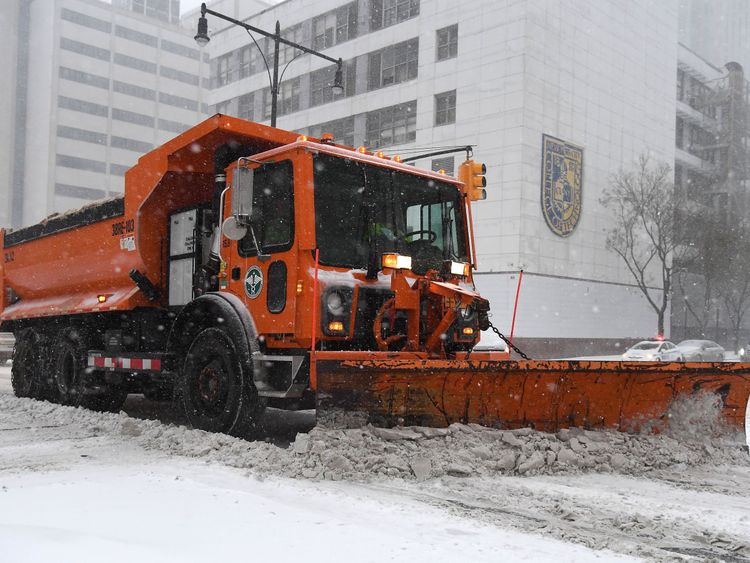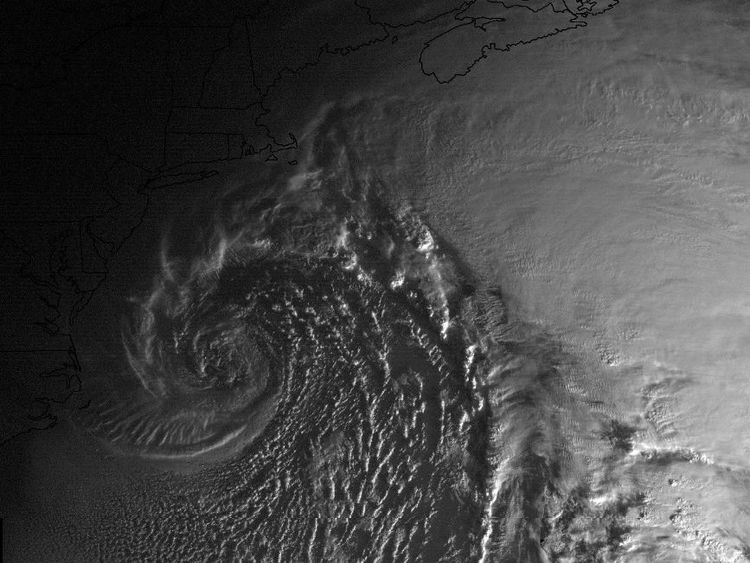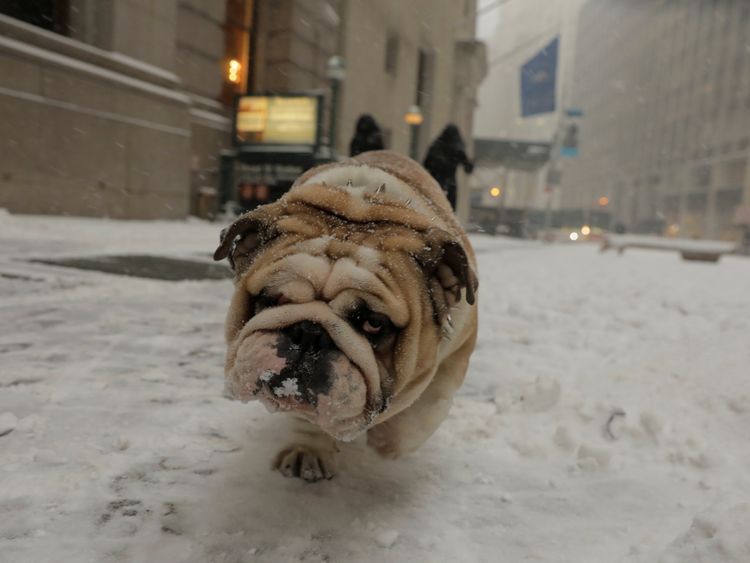A "bomb cyclone" has hit northeast America – with severe weather conditions gripping parts of the US.
Conditions are expected to be especially bad in the New England region on Thursday.
But what is a "bomb cyclone" – and why and where have they happened?
What is a bomb cyclone?
A bomb cyclone is also known as a "bombogenesis" which comes from combining "bomb" with "cyclogenesis".
What does this mean?
To non-meteorologists, this means storm formation. According to the National Oceanic and Atmospheric Administration (NOAA), a storm undergoes bombogenesis when its central low pressure drops at least 24 millibars in 24 hours.

What is a millibar?
A millibar is a unit of pressure that measures the weight of the atmosphere overhead. Sea-level pressure is about 1,010 millibars.
When do bomb cyclones or storms happen?
They occur when a rising column of air leaves an area of low pressure at the Earth's surface which then sucks in the air from surrounding areas. When this air converges, the storm spins faster and faster. The often deadly winds are stronger the closer you are to the centre.

Are they a new weather phenomenon?
No, there have been a number of bomb cyclones that hit the headlines in recent times. The 1993 Superstorm – also called the Storm of the Century – dumped record amounts of snow across eastern areas of the US on 12 and 13 March.
The Great Lakes also suffered one as far back as 1913 which sank 12 ships and killed at least 250 people.
More recently, in February 2017, a bomb cyclone hit the northeast of the States leading to snow of eight inches deep every hour, according to the NOAA.
More from Snow

Which areas will be affected by the current Bomb cyclone?
Major northeastern cities such as Boston risk being hit by blizzards and states of emergency have been issued for Florida, Georgia, North Carolina and Virginia.
Forecasters say New York City may see up to a foot of snow with similar or higher levels forecast for the whole of New England.
[contf] [contfnew] 
Sky News
[contfnewc] [contfnewc]





